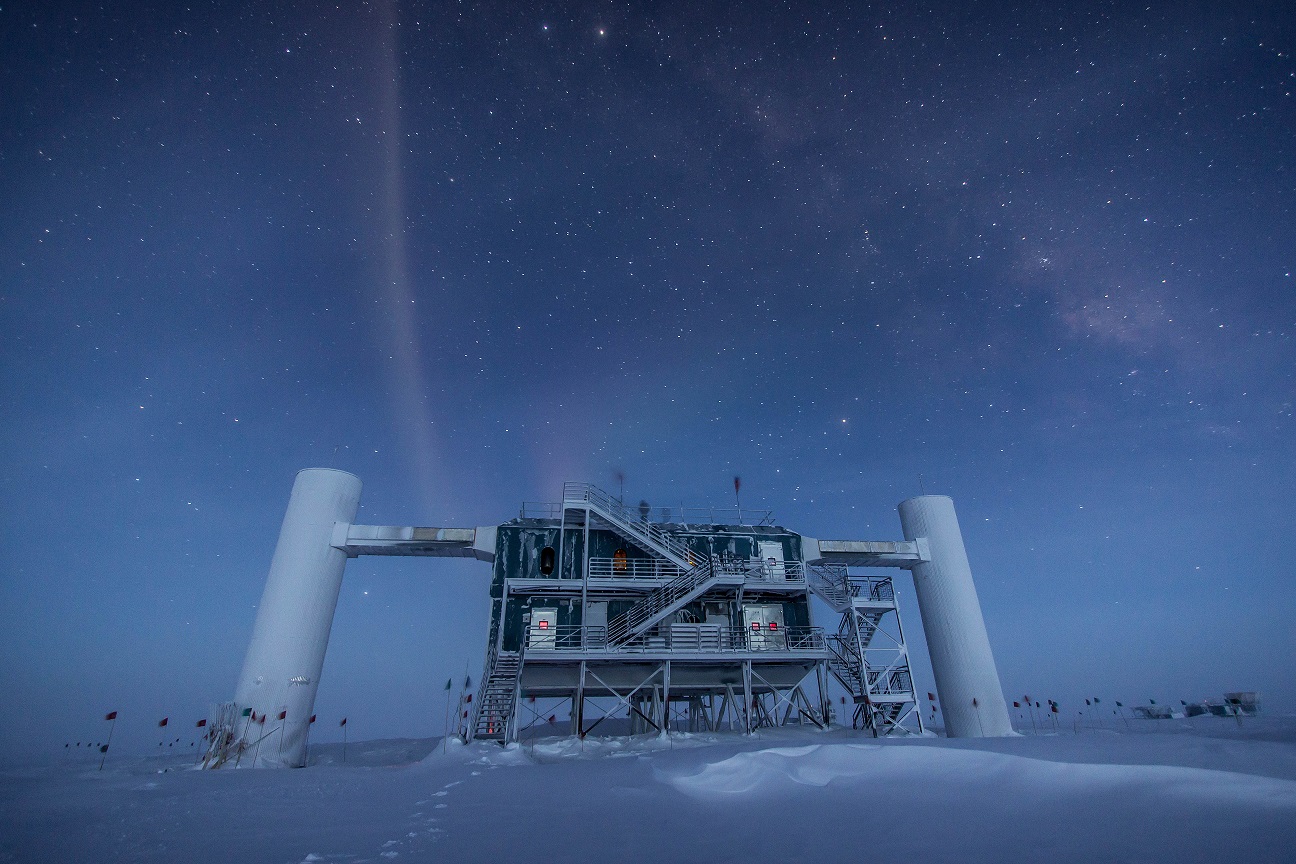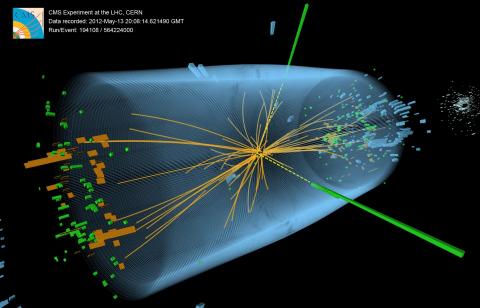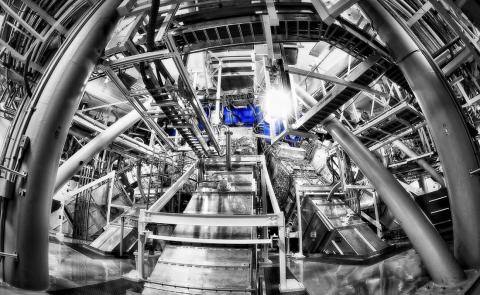Reactions to experiment using neutrinos to understand quantum gravity
The IceCube collaboration, with its detector located under the Antarctic ice sheet, has used astrophysical neutrinos to search for changes in the structure of space-time. In the research, published in Nature Physics, the team analysed more than seven years of data and found no signs of a modified structure of space-time imprinted in the characteristics of these particles, a further step towards understanding quantum gravity.

Credit: Felipe Pedreros/ IceCube-NSF.
Carlos Pobes - neutrinos EN
Carlos Pobes
Postdoctoral researcher of the Q-MAD group at the Institute of Nanoscience and Materials of Aragon (INMA)
IceCube is a fascinating instrument. In its ten years of operation, it is producing incredible results, even beyond expectations. Although it has already more than fulfilled its mission with the detection of the first ultra-energetic neutrinos and the identification of their possible origin in 2017, it has continued to provide very relevant information about the physics of neutrinos, dark matter or, as in this case, quantum gravity theories.
Quantum gravity proposals have generally remained in the realm of theoretical physics, but the birth of multimessenger astronomy (light, neutrinos, cosmic rays and gravitational waves) opens up the possibility of using these particles to test some of their predictions. In particular, very slight disturbances in the propagation of these particles through space are predicted, which are amplified over the long distances they travel to Earth and could therefore be observable. This is the basis for numerous Lorentz invariance violation tests, such as the one published by the IceCube experiment. The study is very thorough, despite having to use some simplifications. What is relevant is that the results are now starting to be competitive with other experiments, despite the fact that the number of neutrinos is quite small. I think that this result makes the extension of the telescope that will be built in the next few years even more interesting, and I am sure that it will continue to give very good results.
It should also be noted that this is one of those cases in science of a major negative result. That is, no quantum gravity effect has been observed, but this limits any theoretical proposal that predicts an effect larger than the limits that have been published, which allows us to begin to restrict some models.
He was IceCube's Winter Over (operator) in 2012.
Mariam Tórtola - neutrinos EN
Mariam Tórtola
Senior Lecturer in the Department of Theoretical Physics at the University of Valencia and at the Institute of Corpuscular Physics (IFIC)
In this work, the IceCube collaboration searches for quantum gravity effects in the astrophysical neutrino signal observed by the South Pole detector. Specifically, it analyses the possible violation of the Lorentz symmetry - according to which the laws of physics must be the same for two observers moving at constant speed relative to each other - predicted by this type of theories.
At the moment, there is no evidence for the existence of this effect, partly because its magnitude would be very small compared to the sensitivity of current experiments. In this sense, astrophysical neutrinos are a very powerful tool for such searches, since, on the one hand, the violation of Lorentz invariance would affect the well-known phenomenon of neutrino flavour oscillations - whereby a certain type of neutrino, with one flavour, turns into another type during its propagation - modifying the signal expected in neutrino telescopes such as IceCube. On the other hand, their high energies and the long distances travelled from their production to their detection on Earth would amplify the magnitude of these new physics effects, bringing them closer to current experimental sensitivity.
This is a high-quality study, backed by the strength of the international IceCube collaboration, a pioneer in the study of high-energy astrophysical neutrinos. It is fully consistent with previous results, which had not detected evidence of Lorentz invariance violation in any of the astroparticle signals studied - photons, cosmic rays, neutrinos, gravitational waves. In the case of neutrinos, the current analysis improves by several orders of magnitude on the limits obtained by the IceCube collaboration itself from observations of atmospheric neutrinos in its 2018 work (ref. 15 of the paper). This is due to the higher energies of astrophysical neutrinos compared to atmospheric neutrinos, which make the expected effect much larger in the former case.
As the authors themselves explain, the work has some limitations. The main limitation is that the Lorentz invariance violation effects can be of different types and, in general, they can appear simultaneously. However, in this paper we assume the presence of only one of these effects at a time. This is a common procedure in this type of studies and its impact is not very important in the result since, for the moment, the focus is on the discovery of this signal. Future precision measurements - should the effect be confirmed - would require more detailed analysis. In any case, these limitations have to be taken into account when analysing the feasibility of quantum gravity models.
The IceCube Collaboration
- Research article
- Letter
- Peer reviewed


